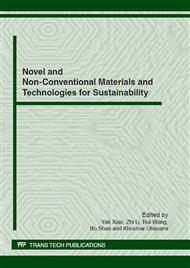p.817
p.824
p.832
p.836
p.844
p.850
p.858
p.864
p.870
Analysis of Energy Consumption and Electricity Consumption Norm of Hotel Building in Changsha, China
Abstract:
The purpose of this study is to discuss the use of energy in hotel building in Hunan province, P. R. China, and to explore the application of building energy conservation. 25 hotel buildings were selected and the investigations of energy consumption data was carried through in Changsha of Hunan province .The building comprehensive consumption of energy and electricity were got from the energy consumption computing method of public buildings. It can be got these indexes of unit energy consumption electricity consumption and so on through unit conversion. According to the current situation of building energy consumption and the related standings of Changsha, such buildings whose norm index range of energy and electricity can be obtained. Conclusion are as follows: It provide guiding significance for the energy-saving prediction which entire building and all of its system .This paper also provides some useful measures which about the applied promotion of related energy-saving technology in such buildings of the region.
Info:
Periodical:
Pages:
844-849
Citation:
Online since:
June 2012
Authors:
Price:
Сopyright:
© 2012 Trans Tech Publications Ltd. All Rights Reserved
Share:
Citation:


